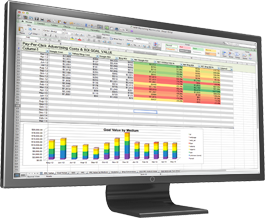I love spreadsheets, and I have for a long time. Remember Lotus 123? Been there. Done that. My current favorite is Microsoft Excel. I use it at home for budgeting and organization. I use it at work for analysis and reporting. And I feel certain at least some of you do too.

But if you’re using spreadsheets for your energy management program, I have an important public service message: Kick the habit—before it’s too late.
You see, spreadsheets are great in the right context. They’re so great that it’s easy to fall in love with them. But eventually they’re going to let you down.
At some point, you might make some of these errors:
Sorting Error
You know what I mean—select the cell, select Sort, and Excel grabs everything except that last column of critical data. But you’re in a hurry, and you click Save, and it looks great until the middle of the budget meeting. And then it’s too late.
Formula Error
You thought it was just a simple cut and paste, and almost all the cells were. Except for the one that wasn’t. Of course it happened to be SUM. I know you’ve done it.
Data Entry Error
Spreadsheets don’t care. Unless you set them up REALLY carefully (isn’t conditional formatting great?), they’ll take almost any number. Doesn’t matter where the decimal is. Doesn’t matter how many zeroes there are. Garbage in—garbage out.
Black on Black Error
That report that you needed to print out RIGHT NOW for the trustees had the detailed salary section, so you just changed the formatting to hide the text. But your assistant sent the file out to the alumni list with the meeting minutes. Oops.
You can read about these kinds of errors, and about 80 more from this spreadsheet risk interest group. I wonder if they sponsor a therapy group.
Even Microsoft doesn’t use Excel for energy management anymore, at least not exclusively. It just wasn’t the right tool for the job.
Need help finding the right tool?
{{cta(‘d5693426-9d8f-4aa1-b8a1-a5f9b80a5d78’)}}
 Best-in-class portfolio-level energy and utility bill data management and reporting.
Best-in-class portfolio-level energy and utility bill data management and reporting.
 Real-time energy and sustainability analytics for high-performance, net-zero buildings.
Real-time energy and sustainability analytics for high-performance, net-zero buildings.
 A holistic view of financial-grade scope 1, 2, and 3 carbon emissions data across your entire business.
A holistic view of financial-grade scope 1, 2, and 3 carbon emissions data across your entire business.
 Energy and sustainability benchmarking compliance software designed for utilities.
Energy and sustainability benchmarking compliance software designed for utilities.



